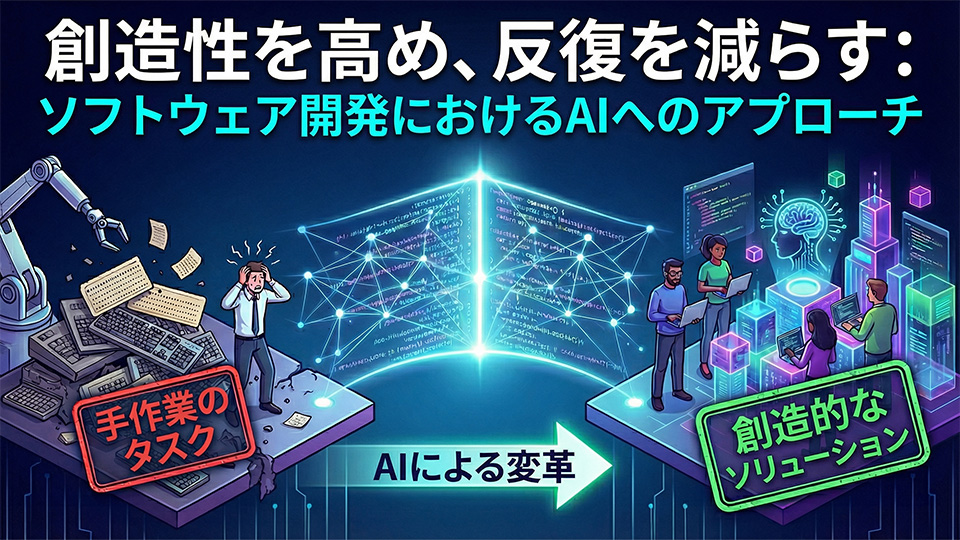April 24, 2025
ユーザー中心設計とはアプリ/ウェブサイトを構築する際はユーザーを第一に考える
知ってた? 適切に設計されたユーザーインターフェイス 見る 200% を超えるコンバージョン率。
このようなポジティブな成果を体系的に達成するための指針となるフレームワークは ユーザー中心設計 (UCD)。
しかし、ユーザー中心設計とは何でしょうか?
UCDのすべては ユーザーを第一に考える。これは、人々のニーズを真に満たす製品を作るための考え方であると同時に段階的なアプローチでもあります。
次のような用語も耳にするかもしれません 人間中心設計 そして デザイン思考。小さな違いはありますが、すべて同じ目標を共有しています。それは、見た目や技術的な特徴だけに焦点を当てるのではなく、実際の人々を念頭に置いてデザインすることです。
この記事では、ダイロックスがUCDとは何か、なぜ重要なのか、どのように機能するのかを、その主要な原則から未来を形作る課題やトレンドまで探ります。

ユーザー中心設計 (UCD) とは
ユーザー中心設計 (UCD) という設計アプローチは 実在の人物を中心に すべての決定について。次のことに焦点を当てています ユーザーを理解する—彼らの目標、課題、背景—そしてそれだけではない製品の創造 機能的 しかし、また 使いやすい、 包括的、および 楽しい。
従来の設計手法とは異なり、UCD はアイデアから立ち上げまで一筋縄ではいきません。それは 連続サイクル 設計、ユーザーとのテスト、ユーザーのフィードバックからの学習、ソリューションの改良を行います。これにより、最終製品がユーザーのニーズを真に満たすことが保証されます。
重要なのは、 プロセス全体を通してユーザーが関わっている—遠くから観察するだけではありません。彼らの洞察がデザインを根本から形作ります。
本当にユーザーに焦点を合わせるとどうなるか?(ヒント:良いこと!)
ユーザー中心設計とは、見栄えを良くすることだけではありません。全体的に測定可能な現実的なメリットをもたらす戦略的アプローチです。
ユーザーを第一に考えることで、企業はエンゲージメントを高め、パフォーマンスを向上させ、永続的な競争力を獲得することができます。
1。エンゲージメントと定着を促進
使いやすく、楽しく、自然に直感的に使える製品 ユーザーの滞在時間を長く保つ。UCD は、フラストレーションを軽減し、満足度を高め、繰り返し使用を促すのに役立ちます。
たとえば、速度や安定性などのパフォーマンス面を優先するモバイルアプリケーションは、 ユーザーエクスペリエンス、特に実証してください 高いリテンション率、時には最大 30% 高い パフォーマンスを無視するアプリよりも。
それが鍵です、特になぜなら 顧客を維持することははるかに費用対効果が高い 常に新しいものを手に入れようとするよりも。

2。コンバージョン率とビジネス成果を向上させます
UCD が役立ちます ユーザージャーニーを効率化、 摩擦の除去 そして人々がより簡単にできるようになったのです 必要なアクションを実行する—購入、サインアップ、またはタスクの完了など。
適切にデザインされたエクスペリエンスは、コンバージョン率を劇的に高めることができます。 400% まで—さらに増加 ユーザーが支払っても構わないと思っている金額。
電子商取引だけでも、 より優れたユーザーエクスペリエンス 放棄されたカートで失われた数十億ドルを取り戻すのに役立ちます。
3。ロイヤルティとブランド・アドボカシーの構築
ユーザーがスムーズで満足のいく体験をすると、次のような傾向が高まります。 スティック・アラウンド そして 製品を他の人に推薦する。この口コミマーケティングは非常に貴重です。
さらに、適切に実行されたUCDプロセス ブランド全体の認知度を高める、信頼と信頼を築きます。
Forresterのデータによると、ユーザーはおよそ ブランドを推薦する可能性が 16.6% 高い 優れたユーザーエクスペリエンスを提供します。
4。コスト削減と開発スピードアップ
実際のユーザーインサイトに基づいた設計が役立ちます コストのかかるやり直しを回避 後で。UCD はユーザビリティの問題を早期に発見し、時間と費用を節約し、頭を悩ませることもありません。
それも サポートリクエストの削減、 オンボーディングを短縮、さらにはできる 市場投入までの時間を短縮。
たとえば、ある主要なコンタクトセンターアプリケーションのユーザーエクスペリエンスの向上により、Verizonは数百万ドルのコスト削減を実現したと報告されています。 平均処理時間を8,000万ドル、トレーニングコストを7,500万ドル削減。
5。競争の激しい市場で差別化を図る
混雑したデジタル空間では、UXが忘れ去られるか、頼りになる選択肢になるかの分かれ目になることがあります。
機能に重点を置いている企業もありますが、Apple、Spotify、Duolingoなど、ユーザーエクスペリエンスを優先する企業もあります。物事を美しく機能させることで目立たせる 実在の人々のために。
デザイン重視の企業が見ている調査結果 より速い成長 (32% 以上) そして 株主還元の向上 (56% 以上多い)。
ユーザー中心設計の基本原則
UCD は単なる方法ではなく、実際に使う人のためになる製品をつくるという考え方です。それをうまく実現するために、UCD は設計と開発のプロセス全体を通してユーザーを第一に考えるという一連の指針に従っています。
1。ユーザーを理解し、共感する
UCD は次の文字で始まります デザイン対象者に対する深い理解—彼らが誰で、何を達成しようとしているのか、なぜ製品を使うのか、そして彼らが日常の環境でどのように製品と関わっているのか。
これには彼らが含まれます 目標、 ニーズ、 欲求不満、 テクニカルスキル、 時間制約、および 物理的または状況的な制限。
真のユーザー中心設計とは みんなのためのデザイン。これには、さまざまな能力、言語、デバイス、コンテキストを持つ人々が含まれます。
アクセス性 あればいいというわけではありません—それは 必須。カラーコントラストからキーボードナビゲーションまで、 インクルーシブデザイン すべてのユーザーが歓迎され、サポートされ、力を与えられていると感じられるようにします。

2。ユーザーを積極的に関与させる
仮定をしたり、専門家の意見だけに頼ったりするのではなく、UCD 実際のユーザーをプロセスに引き込む 早くそして頻繁に。インタビュー、フィードバックセッション、プロトタイプテストを通じた彼らの意見が、初日から設計を形作ります。
この協調精神が最終製品を保証するのは どのユーザーを反映するか 実際に 必要、 私たちだけじゃなくて 考える 彼らは欲しがっている。

3。設計、テスト、繰り返し (反復):
UCD を使った設計とは テスト アイデア、ユーザーからの学習、ソリューションの改良—何度も何度も。
フィードバック 単なるチェックボックスではありません。 コアパーツ 製品が本当にオーディエンスに役立つまで、継続的な改善に役立つプロセスについて書かれています。そして、それは発売時に止まりません。繰り返し 継続中です。
4。使いやすく、直感的で、一貫性のあるものにする

優れたデザインの製品とは 簡単に学べる、 効率よく使える、および 過ちの許し。これを実現するということは、不必要な複雑さを取り除き、使用することを意味します。 明確でわかりやすい言葉。
インタフェース 感じるはず 直観的、オファリング ビジュアルキュー そして フィードバック これにより、ユーザーは各ステップを自然にガイドできます。
一貫したレイアウト、ビジュアル、インタラクション 親しみやすさを高め、ユーザーが自信を持ってコントロールできるようにしましょう。
ナビゲーションをクリア すべてを結び付けることで、混乱やフラストレーションを感じることなく、現在の場所、どこに行けばよいか、どうやってそこにたどり着くのかを簡単に理解できるようになります。
5。ユーザーニーズとビジネスニーズのバランスを取る
UCD はビジネス目標を無視しません。ビジネス目標をユーザーのニーズに合わせるのに役立ちます。
目標は、次のようなスマートで持続可能なソリューションを見つけることです。 ユーザーとビジネスの両方に利益をもたらす。このバランスこそが、それだけではない製品を生み出す鍵となります。 役立つ しかし、また 実行可能 そして 成功した。
UCD ライフサイクル:実践的なプロセスフレームワーク
UCDの原則は理念を示しますが、実際の実践的なプロセスを通じてそれらを適用すると、真の魔法が起こります。
UCD ライフサイクルは厳密なチェックリストではなく、 柔軟で進化するサイクル どこ ステップが重なってループバックすることが多い 新しい洞察が浮かび上がるにつれて。
このプロセスの一般的なフェーズを見ていきましょう。
1。ユーザーを理解する(まずは聞くことから始めよう!)

ゴール:
何かを設計したり構築したりする前に、はっきりさせておきましょう 誰 あなたが作っているのは、そして 何 彼らは本当に必要としています。
何が起こるか:
これは、ディープダイブディスカバリーフェーズです。実際のユーザーとつながり、ユーザーの目標、不満、習慣、そしてユーザーが製品を使用する背景について学びます。つまり、
彼らと話す (インタビューまたはアンケートを通じて)
彼らを見ている 現在のツールまたは回避策を使用する (状況に応じた観察)
フィードバックの分析 パターンと問題点を明らかにする
これは推測することではなく、聞くことです。そして、学んだことを基に、製品の内容を定義できます。 本当に ユーザーの成功を支援するために行う必要があります。
2。アイデアのスケッチとテスト (早く試して、早く学ぶ)

ゴール:
仮定に基づいて何かを構築するために時間とお金をかけるのではなく、まずテストしてみてください。
何が起こるか:
ユーザーインサイトを手に入れたら、ソリューションのブレインストーミングを開始します。それは次のようになります。
スケッチ 可能なレイアウトの
ワイヤーフレーム 構造を示しています。
クリック可能なプロトタイプ 実際の製品がどのように機能するかを模倣したものです
次に、それらの初期のアイデアを実際のユーザーでテストします。簡単なタスクを完了するようユーザーに依頼します。彼らがためらったり、道に迷ったり、成功したりするところを見守ってください。コードを 1 行書くずっと前に、何がうまくいくか、何がうまくいかないかがわかります。
また、コンテンツを見つけやすく使いやすいように、コンテンツの構造とナビゲーションを微調整する絶好の機会でもあります。
3。ビルド、ローンチ、そして継続的な改善
ゴール:
何か素晴らしいものを立ち上げ、それをさらに改善し続けましょう。
何が起こるか:
今度は、検証済みの設計を実用的な製品に変えましょう。しかし、発売をゴールとは考えないでください。次の出発点に過ぎません。
製品が世に出たら:
人々がどのように使用しているかを監視する
継続的なフィードバックを収集 (アンケート、アナリティクスを通じて、 サポートチケットなど)
磨き続け、改善し続ける 学んだことに基づいて
このステップは、ユーザーとのつながりを維持し、製品をユーザーのニーズに合わせて進化させ続けることです。小規模な更新、迅速な修正、定期的な改善により、作業がスムーズに進み、長期にわたってユーザーの満足度を維持できます。
最後にもう1つ:ラインではなくループです
この 3 つのステップは 1 回で完了するわけではありません。彼らは何度も何度もお互いに栄養を与え合う。耳を傾け、テストし、構築し、改良すればするほど、製品の品質は向上し、ユーザーの満足度も上がります。
ユーザー中心設計の実装における一般的な課題の克服
UCDの原則とプロセスはデジタル製品を成功させるための強力なフレームワークを提供しますが、組織は導入時に実際的な課題に直面することがよくあります。
これらの潜在的なハードルを認識し、効果的な緩和戦略を採用することは、ユーザーファーストのアプローチのメリットを最大限に引き出すために不可欠です。
「時間/お金がかかりすぎる」
チャレンジ:
UCDは、遅すぎる、または高価すぎるとして却下されることがあります。リサーチ、プロトタイピング、 テスト 贅沢品のように思えるかもしれません。特にプロジェクトのスケジュールが厳しく、予算が厳しい場合はなおさらです。
それを克服する方法:
ビジネスケースの作成: UCD をスキップすると、リリース後の重大な問題の修正、機能の浪費、導入率の低下、サポートコストの増加など、より大きな問題が発生することがよくあります。例を挙げて利害関係者にROIを示し、 データ。
アプローチの拡大: UCDは全部かゼロかではありません。ゲリラテスト、モデレートされていないリモートテスト、5 人のユーザーのみでのテストなど、軽量な方法を使用してください。プロジェクトにとって最も重要なことに集中しましょう。
早く始める: 最初からユーザーを含めることで、修正に費用がかかる前に問題を発見できます。
「ユーザーが何を望んでいるかはすでにわかっています」
チャレンジ:
チームは、ユーザーが何を求めているかをすでに把握していると思って、調査をまったくスキップすることがあります。しかし、思い込みが原因で製品がコースから外れることがあります。
それを克服する方法:
直接入力の力を示してください: 実際のユーザーフィードバックにより、予期しないニーズや問題点が明らかになることがよくあります。引用、短いクリップ、またはユーザビリティテストの例を使用して、仮定に疑問を投げかけましょう。
データによる意思決定のサポート: UCD は専門知識に取って代わるものではなく、その検証に役立ちます。アイデアをエビデンスで裏付けましょう。
共感を築く: ペルソナ、ジャーニーマップ、またはユーザーストーリーを使用して、関係者がユーザーの視点から製品を見られるようにします。
「チームから賛同を得ることは難しい」
チャレンジ:
賛同を得る 経営陣、プロダクトオーナー、その他の部署からの意見は、特にUCDが初めてだったり、誤解されていたりする場合は厳しいものです。
それを克服する方法:
相手の言語を話す: メッセージをカスタマイズしてください。財務部門には ROI、戦略チームには競争力を、業務部門にはワークフローの効率性について話しましょう。
見せて、言わないで: 利害関係者にUCDの実際の様子を見てもらいましょう。テストセッションに招待したり、手っ取り早い成功事例やケーススタディを共有したりできます。
小さく始める: 抵抗がある場合は、拡大する前に小規模なパイロットを提案して価値を証明してください。
UCD を機能させるには、適切な手順に従うことだけではなく、 ユーザーの洞察が評価され、理解され、行動に移される文化の創造。それにはかかる 明確なコミュニケーション、 共感の共有、および コミットメント 使う人に本当に役立つ製品を作ることなんです
正しい考え方といくつかの賢い戦略をもってこれらの課題に正面から向き合うことで、ユーザー中心のアプローチを可能にするだけでなく、強力なものにすることができます。

結論
ユーザー中心設計(UCD)とは、ユーザーを製品開発の中心に置き、実際のユーザーのニーズとフィードバックに基づいて設計を進めることです。これは共感、理解、継続的な改善の継続的なプロセスであり、直感的で楽しく、価値のある製品を生み出すのに役立ちます。
最終的に、UCDはデジタルツールを、永続的な関係と成長を促進する、ユーザー中心の有意義な体験に変えます。





























.svg)













